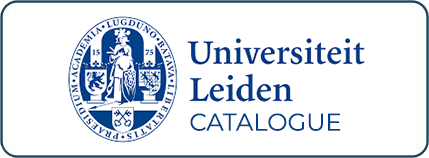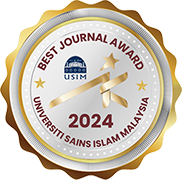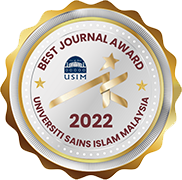REJUVENATING HUMAN CAPITAL IN SYARIAH LEGAL INSTITUTIONS THROUGH FIQH FORENSICS FUNDAMENTAL MODULE: A PRELIMINARY REVIEW
DOI:
https://doi.org/10.33102/mjsl.v8i1.191Keywords:
Fiqh Forensics, scientific evidence, syariah officers, syariah legal institutions, rejuvenationAbstract
The development of science and technology today has contributed to the advancement of evidence law in the Civil Courts as well as Syariah Courts. The said application of science and technology refers to the scientific evidence produced from the results of analysis done by the expertise in forensic science. Numbers of reported Syariah cases has applied forensic science analysis and test to produce scientific evidence. These cases have portrayed the admission of scientific evidence in Syariah Courts and indicate the readiness of human capital in the Syariah Legal Institutions to apply the scientific evidence. Therefore, this study carry three purposes, to examine the main issues in handling the scientific evidence, to provide suggestion to rejuvenate human capital in Syariah Legal Institutions, and to suggest solution for the issues pointed out throughout the discussion. The result of this study elucidates two main issues that play integral part in handling the scientific evidence, which are the lack of knowledge and adequate experience. In order to overcome these particular issues, rejuvenation on the existing human capital in Syariah Legal Institutions must be done. This study focused on the rejuvenation in the aspect of knowledge and skills of human capital. The said module should contain two mains aspect, theoretical and practical aspect of forensic science. The target of this module is to serve the Syariah officers in the Syariah Legal Institutions as comprehensive guideline and instruction to lead the fundamentals of the forensic science in Syariah Courts into an appropriate platform. In conclusion, this study suggests the development of Fiqh Forensics Fundamental Module to curb the issues of lack of sufficient knowledge and adequate skills in handling scientific evidence.
Downloads
References
‘AzzÄm, Ṭ. á¹¢. Y. (2009). Athar Aá¹-Ṭibb al-SharÊ¿Ä« fÄ« IthbÄt al-ḤuqÅ«q wa al-JarÄim (1st ed.). Amman: Dar al-Nafa'is.
Abdul Ê¿AzÄ«z al-BukhÄrÄ«, A. Ê¿. A. (1997). Kashf al-AsrÄr Ê¿an Uṣūl Fakhri al-IslÄm al-BazdawÄ« (A. M. M. Omar Ed. 1st ed. Vol. 4). Beirut: DÄr al-Kutub al-Ilmiah.
Abdul Hamid, M. (2014). Pelaksanaan Hudud Di Brunei: Perbezaan Di Antara Brunei Dan Malaysia. Jabatan Kemajuan Islam Malaysia (JAKIM). Retrieved from http://www.islam.gov.my/sites/default/files/bahagian/penyelidikan/tun_abdul_hamid_mohamad_-_pelaksanaan_hudud_di_brunei.pdf
Abdullah, M. F. (2012). The role of Islam in human capital development: a juristic analysis. Humanomics, 28(1), 64-75.
Abu Zuhrah, M. (1958). Uṣūl al-Fiqh. Cairo: Dar al-Fikr al-'Arabi.
Ahmad Syukran, B. (2014). Fiqh Forensik: Pengenalan Fiqh Forensik. Majalah Al-Ustaz, 31, 68-69.
Ahmad Syukran, B. (2017a). Di Sebalik Fiqah Forensik (1st ed.). Kuala Lumpur: Telaga Biru Sdn Bhd.
Ahmad Syukran, B. (2017b). The Integration of Forensic Science Fundamentals and Al-Qarinah Towards Achieving Maqasid Al-Shari'ah. (Doctor of Philosophy), Universiti Teknologi Malaysia, Skudai.
Ahmad Syukran, B., Amidon, A., Mohammad Amir, W. H., Aminuddin, R., & Abdul Rahim, Y. (2015). Makmal Kriminologi (Forensik) Terakreditasi Bagi Kegunaan Mahkamah Shari’ah: Suatu Tinjauan Awal. Sains Humanika, 5(3), 65-75.
al-Ê¿AzÄ«m Ä€bÄdÄ«, M. A. A. (1995). Ê¿Aun al-MaÊ¿bÅ«d Sharḥ Sunan AbÄ« Daud (2nd ed. Vol. 12). Beirut: Dar al-Kutub al-Ilmiah.
al-JurjÄnÄ«, A. M. (1983). al-TaÊ¿rifÄt (1st ed.). Beirut: Dar al-Kutub al-'Ilmiah.
al-MunÄwÄ«, M. A. R. T. (1937). Faydh al-Qaá¸Ä«r bi-Sharḥ al-JÄmiÊ¿ al-á¹¢aghÄ«r (1st ed. Vol. 5). Egypt: Maktabah al-Tijariyyah al-Kubra.
al-MunÄwÄ«, M. A. R. T. (1988). al-TaysÄ«r bi-Sharḥ al-JÄmiÊ¿ al-á¹¢aghÄ«r (3rd ed. Vol. 2). Riyad: Maktabah al-Imam al-ShafiÊ¿Ä«.
al-Qurtubi, M. A. (2006). al-JÄmiÊ¿ li-AḥkÄm al-Qur'Än (A. A. Muhsin & R. Arqaswasi Eds. 1st ed. Vol. 11). Beirut: Mu'asasat al-Risalah.
al-RÄzÄ«, M. O. (1981). al-TafsÄ«r al-KabÄ«r aw MafÄtiḥ al-Ghayb (2nd ed. Vol. 9). Beirut: Dar al-Kutub al-Ê¿Ilmiah.
al-á¹¢anÊ¿ÄnÄ«, M. I. (2011). al-TanwÄ«r Sharḥ al-JÄmiÊ¿ al-SaghÄ«r (M. I. M. Ibrahim Ed. 1st ed. Vol. 8). Riyad: Maktabah Dar al-Salam.
al-ZuḥaylÄ«, M. M. (2011). al-MuÊ¿tamad fÄ« al-Fiqh al-ShÄfiÊ¿Ä« (3rd ed.). Damascus: Dar al-Qalam.
al-Zuḥayli, W. M. (2006). al-WajÄ«z fÄ« Uṣūl al-Fiqh al-IslÄmÄ« (2nd ed. Vol. 1). Damascus: Dar al-Khayr.
al-ZuḥaylÄ«, W. M. (2007). al-Fiqh al-IslÄmÄ« wa Adillatuhu (Vol. 10). Damascus: Dar Al-Fikr.
al-Zuḥaylī, W. M. (2009). al-Tafsīr al-Munīr fī al-ʿAqīdah wa al-Sharīʿah wa al-Manhaj (10th ed. Vol. 9). Damascus: Dar al-Fikr.
Alias, A., & Abdul Ghafur, A. H. (2017). DNA Sebagai Qarinah Di Mahkamah Syariah: Analisis Terhadap Enakmen Keterangan Mahkamah Syariah Perlis 2006. International Journal of Law Government and Communication, 2(6), 76-86.
Amir Husin, M. N., & Nik Azlan, N. M. (2008). Qarinah: Kajian Penggunaan Alat Pengesan Alkohol di Bahagian Penguatkuasa Jabatan Agama Islam Wilayah Persekutuan. Jurnal Undang-Undang Dan Masyarakat, 12, 110-130.
Amrizah, K., Nawal, K., Md. Mahmudul, A., & Siti Akmar, A. S. (2018). Human capital accountability and construct: Evidence from Islamic microfinance institutions in Malaysia. Global Journal Al-Thaqafah, Special Issue 2018, 117-130.
Ayman Muhamad Ali. (2008). ShahÄdah Ahlu al-Khibrah wa AḥkÄmuhÄ: DirÄsat Fiqhiyyah muqÄranah. Amman: DÄr al-ḤÄmid li al-Nashr wa al-Tawzi'.
Badri, F. (2018). A Genuine Islamic Conceptualization of Religious Freedom. Muslim World Journal of Human Rights, 15(1), 1-27.
DerenÄinović, D., VidliÄka, S. R., & PrtenjaÄa, M. D. (2017). “Innocence projects†and subsequent DNA testing in croatia: A possible reality or an unattainable desire. Zbornik Pravnog Fakulteta u Zagrebu, 67(3-4), 373-404.
Eddyham bin Zainuddin lwn. Rahimah bt. Muhamad (2015), 40(2) JH 238 (Negeri Sembilan Court of Appeal).
Habib, M., Abbas, J., & Noman, R. (2019). Are human capital, intellectual property rights, and research and development expenditures really important for total factor productivity? An empirical analysis. International Journal of Social Economics, 46(6), 756-774.
Hashi, A. A., & Bashiir, A. (2009). Human Capital Development from Islamic Perspective. Paper presented at the International Conference on Human Capital Development, Universiti Malaysia Pahang.
Hayes, B. K., Navarro, D. J., Stephens, R. G., Ransom, K., & Dilevski, N. (2019). The diversity effect in inductive reasoning depends on sampling assumptions. Psychonomic Bulletin & Review, 26(3), 1043-1050.
Ibnu Faris, A. F. (1979). Mu’jam MaqÄyis al-Lughah (A. S. M. Harun Ed. Vol. 6). Dimashq: Dar Al-Fikr.
Ibnu RuslÄn, A. H. (2016). Sharḥ Sunan AbÄ« Daud (K. al-Ribaá¹ Ed. 1st ed. Vol. 17). Egypt: Dar al-Falah.
Innocent Project. (2019a). About. Retrieved from https://www.innocenceproject.org/about/
Innocent Project. (2019b). DNA Exonerations in the United States. Retrieved from https://www.innocenceproject.org/dna-exonerations-in-the-united-states/
Innocent Project. (2019c). Informing injustice: The disturbing use of jailhouse informants. Retrieved from https://www.innocenceproject.org/informing-injustice/
Innocent Project. (2019d). Overturning Wrongful Convictions Involving Misapplication Forensics. Retrieved from https://www.innocenceproject.org/overturning-wrongful-convictions-involving-flawed-forensics/
Julien, H. (2008). Content Analysis. In L. M. Given (Ed.), The Sage Encyclopedia of Qualitative Research Methods (Vol. 1, pp. 120-122). California: SAGE Publications, Inc.
Leavy, P. (2017). Research Design: Quantitative, Qualitative, Mixed Methods, Arts-Based, and Community-Based Participatory Research Approaches. New York: The Guilford Press.
Liew, J., Grisham, J. R., & Hayes, B. K. (2018). Inductive and deductive reasoning in obsessive-compulsive disorder. Journal of Behavior Therapy and Experimental Psychiatry, 59, 79-86.
Lukman, A. M., & Wan Abdul Fattah, W. I. (2012). Al-Qarīnah: antara Kekuatan dan Keperluan dalam Mensabitkan Jenayah (Zina). International Journal of Islamic Thought, 2, 1-17.
Mahmood, H. K., Hashmi, M. S., Shoaib, D. M., Danish, R., & Abbas, J. (2014). Impact of TQM practices on motivation of teachers in secondary schools empirical evidence from Pakistan. Journal of Basic and Applied Scientific Research, 4(6), 1-8.
Metwally, M. (2019). Forensic organizational psychology: shedding light on the positive repercussions of ethical leadership in forensic medicine. Egyptian Journal of Forensic Sciences, 9(1). doi: 10.1186/s41935-019-0125-7
Mohd Sabree, N., Mohamad Afandi, M. I., Mohd Al Adib, S., & Abu Suffian, A. Y. (2017, 31st July - 1st August). Keterangan Pakar Sebagai Cara Pembuktian di Mahkamah Syariah. Paper presented at the E-Proceeding of the 4th World Conference on Integration of Knowledge 2017, Bayview Beach Resort, Batu Ferringhi Beach, Pulau Pinang, Malaysia.
Muhammad Azhari, A. R. (2015). Meneliti Keterangan Saksi Pakar di Mahkamah Syariah. Paper presented at the Lawyer: One Stop Centre 4, Al Āli al-Bayt University, Jordan.
Na'imah, S. (2014). Prospek Pemakaian Qarinah Dan Pendapat Pakar Dalam Pembuktian Jenayah Sihir. (Master of Shariah), University of Malaya, Kuala Lumpur.
Nayak, B. P., & Khajuria, H. (2019). Eyewitness testimony: probative value in criminal justice system. Egyptian Journal of Forensic Sciences, 9(1). doi:10.1186/s41935-018-0109-z
Neely, A. H., & Ponshunmugam, A. (2019). A qualitative approach to examining health care access in rural South Africa. Social Science and Medicine, 230, 214-221.
Payne, G., & Payne, J. (2004). Key Concepts in Social Research. London: SAGE Publications Ltd.
Pendakwa Syarie Negeri Sabah lwn. Rosli bin Abdul Japar (2007), 23(2) JH 237 (Keningau Syariah High Court).
Prichina, O. S., Orekhov, V. D., Evdokimova, Y. V., Kukharenko, O. G., & Kovshova, M. V. (2019). Evolution of key factors and growth potential of human capital. International Journal of Innovative Technology and Exploring Engineering, 8(7), 2226-2234.
Prior, L. F. (2008). Document Analysis. In L. M. Given (Ed.), The Sage Encyclopedia of Qualitative Research Methods (Vol. 1, pp. 230-231). California: SAGE Publications, Inc.
Raja Muhammad Zuha, R. K. B., & Ramalinggam, R. (2017). Entomologi Forensik sebagai Keterangan Saintifik. The Law Review, 36-45.
Ramlee, Z. (2015). Pembuktian Dalam Kes Jenayah Syariah Malaysia: Isu dan Penyelesaian (Proving Cases in Syariah Courts: Issues and Resolutions). Jurnal Kanun, 27(1), 122-142.
Reid, J. A. (1953). Notes on House-Flies and Blow-Flies in Malaya. Bullentin of Institute for Medical Research Malaya, 7, 1-26.
Ridha Abdah, S. (2015). Application(s) of Forensic Evidence in Proving Facts in Issue. Paper presented at the Lawyers One Stop Centre (LANCER 2015), Al Āli al-Bayt University, al-Mafraq, Jordan.
Roller, M. R., & Lavrakas, P. J. (2015). Applied qualitative research design: a total quality framework approach. New York: The Guilford Press.
Schiffer, B. (2009). The relationship between forensic science and judicial error: a study covering error sources, bias, and remedies. (Doctoral Degree), University of Lausanne, Switzerland.
Tengku Fatimah Muliana, T. M., Siti Khatijah, I., & Najmiah, O. (2011). Penggunaan DNA Bagi Penentuan Nasab al-Walad Li al- Firasy dalam Peruntukan Undang-undang Keluarga Islam di Malaysia. Jurnal Islam dan Masyarakat Kontemporari, 5(Khas), 17-25.
Thompson, W. C., & Schumann, E. L. (1987). Interpretation of statistical evidence in criminal trials: The prosecutor's fallacy and the defense attorney's fallacy. Law and Human Behavior, 11(3), 167.
Viswanathan, T. K. (2007). Legislative Drafting - Shaping The Law For The New Millennium. New Delhi: The Indian Law Institute.
Walsh, K. (2014). Documentary research and evaluation in medical education. J Educ Eval Health Prof, 11, 18. doi:10.3352/jeehp.2014.11.18
Wehr, H. (1976a). LiÊ¿Än. In A Dictionary of Modern Written Arabic. New York: Spoken Language Services Inc.
Wehr, H. (1976b). á¹¢alÄḥiyyah. In A Dictionary of Modern Written Arabic. New York: Spoken Language Services Inc.
Zainul Abidin bin Mat Akhir lwn Ahmad Nazreen bin Zainul Abidin & Seorang Lain (2016), 43(1) JH 17 (Kuala Lumpur Syariah Court of Appeal).
ZaydÄn, A. K. (1976). al-WajÄ«z fÄ« UsÅ«l al-Fiqh (1st ed.). Beirut: Muassasah al-Risalah.
ZaydÄn, A. K. (2011). NiẓÄm al-Qaá¸Ä’ī fÄ« al-Sharī‘ah al-IslÄmiyyah (3rd ed.). Beirut, Lebanon: Muassasah al-RisÄlah.
Zulkifli, M. A.-B. (2017, 4th October). Irsyad Al-Hadith Siri Ke-217: Itqan (Tekun) Dalam Setiap Pekerjaan. Retrieved from https://muftiwp.gov.my/ms/artikel/irsyad-fatwa/irsyad-fatwa-umum/2729-irsyad-al-fatwa-siri-ke-266-musahaqah-lesbian-dan-hukum-berkaitan
Downloads
Published
Issue
Section
License
Copyright (c) 2020 Muhammad Hazim Ahmad, Ahmad Syukran Baharuddin, Hasnizam Hashim, Hendun Abd Rahman Shah, Aminuddin Ruskam, Mohammad Amir Wan Harun

This work is licensed under a Creative Commons Attribution-NonCommercial 4.0 International License.














































